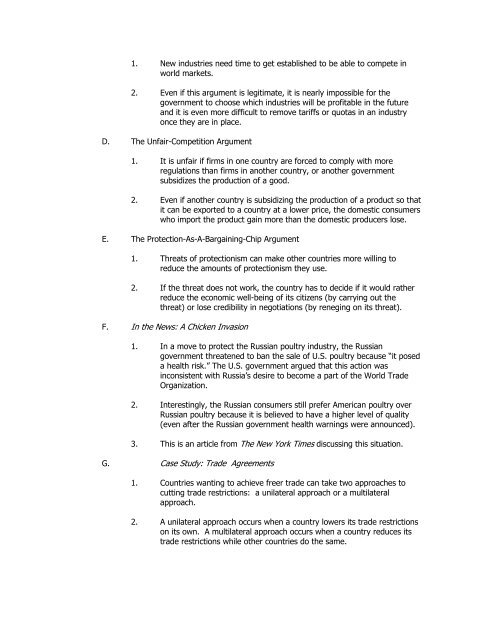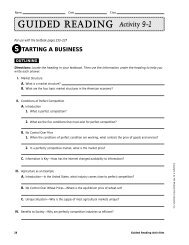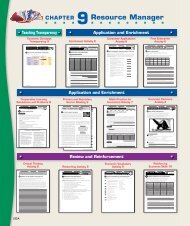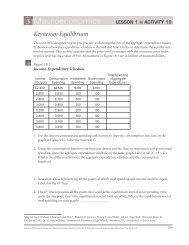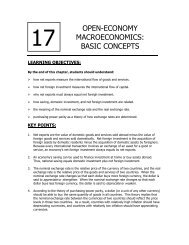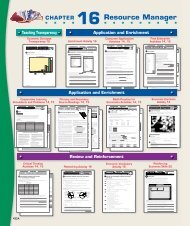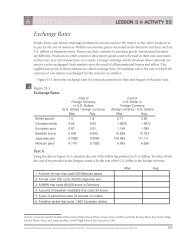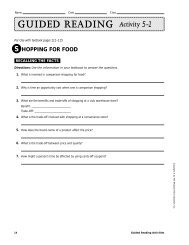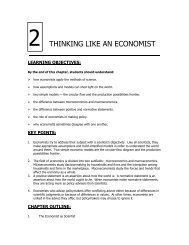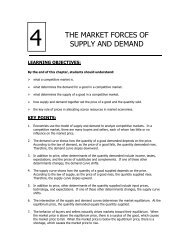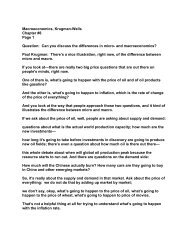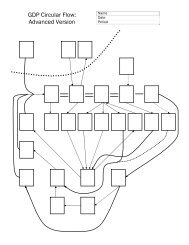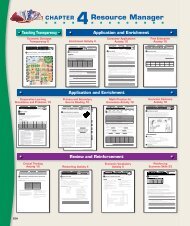You also want an ePaper? Increase the reach of your titles
YUMPU automatically turns print PDFs into web optimized ePapers that Google loves.
1. New industries need time to get established to be able to compete inworld markets.2. Even if this argument is legitimate, it is nearly impossible for thegovernment to choose which industries will be profitable in the futureand it is even more difficult to remove tariffs or quotas in an industryonce they are in place.D. The Unfair-Competition Argument1. It is unfair if firms in one country are forced to comply with moreregulations than firms in another country, or another governmentsubsidizes the production of a good.2. Even if another country is subsidizing the production of a product so thatit can be exported to a country at a lower price, the domestic consumerswho import the product gain more than the domestic producers lose.E. The Protection-As-A-Bargaining-Chip Argument1. Threats of protectionism can make other countries more willing toreduce the amounts of protectionism they use.2. If the threat does not work, the country has to decide if it would ratherreduce the economic well-being of its citizens (by carrying out thethreat) or lose credibility in negotiations (by reneging on its threat).F. In the News: A Chicken Invasion1. In a move to protect the Russian poultry industry, the Russiangovernment threatened to ban the sale of U.S. poultry because “it poseda health risk.” The U.S. government argued that this action wasinconsistent with Russia’s desire to become a part of the World TradeOrganization.2. Interestingly, the Russian consumers still prefer American poultry overRussian poultry because it is believed to have a higher level of quality(even after the Russian government health warnings were announced).3. This is an article from The New York Times discussing this situation.G. Case Study: Trade Agreements1. Countries wanting to achieve freer trade can take two approaches tocutting trade restrictions: a unilateral approach or a multilateralapproach.2. A unilateral approach occurs when a country lowers its trade restrictionson its own. A multilateral approach occurs when a country reduces itstrade restrictions while other countries do the same.


